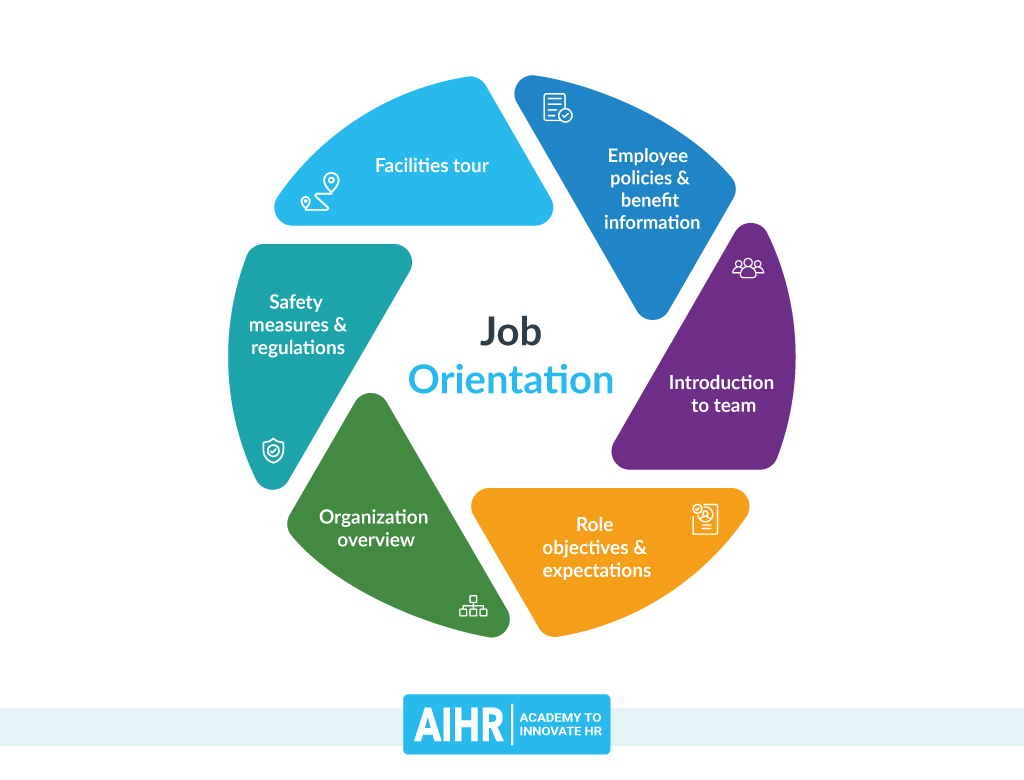
Articles
What Is the Purpose of Employee Orientation?

What is the purpose of employee orientation? Employee orientation is often overlooked or underestimated, yet it's a crucial step in the process of onboarding and training new hires.
A successful orientation program can make a great initial impact on new hires while providing them with the resources they need to thrive. From benefits to tips and strategies, this blog post will explore all aspects of employee orientation so you can ensure your team has everything they need from day one. So let's answer together: what is the purpose of employee orientation?
What is the Purpose of Employee Orientation?
What is the purpose of employee orientation? Employee orientation is an important part of the onboarding process for any business, as it helps to set expectations, goals, and objectives for new employees while creating a positive work environment from day one.
Establishing Expectations
Orientation is the perfect time to ensure that everyone is on the same page when it comes to expectations in terms of job duties, company policies and procedures, dress code, and other important aspects of the workplace.
It also allows employers to explain their values and mission statement so that employees understand what they are working towards. This can help foster an understanding between employer and employee right off the bat which will be beneficial down the line.
Setting Goals and Objectives
During orientation, employers should provide clear goals and objectives for each employee so they know exactly what’s expected of them during their tenure with the company.
This could include things like performance metrics or specific tasks and projects that need completion by certain deadlines. Providing this information upfront will help keep everyone accountable throughout their employment journey with you.
Creating a Positive Work Environment
Orientation provides an opportunity to make sure all new hires feel welcome in their new role within your organization. After all, first impressions count!
Employers should take advantage of this time by introducing team members who may not have had prior contact with each other yet (or even those who have) so everyone can get acquainted in a relaxed setting before diving into work mode full-time.
Additionally, employers should use this chance to discuss any fun activities or events planned throughout the year — think office Olympics or happy hours — as these are great ways to build camaraderie amongst colleagues. Friendships ultimately lead to better productivity at work overall.

Elements of an Effective Orientation Program
Now we have answered the basics of "what is the purpose of employee orientation?" Let us now look at the elements of effective employee orientation programs.
Introduction to Culture
The most effective employee orientation programs should provide employees with an introduction to the company's culture and values. This helps new hires understand how their role fits into the organization as a whole and allows them to develop meaningful relationships with colleagues early on.
When introducing company culture and values during orientation sessions, it is important to keep things engaging by using visual aids such as videos or infographics whenever possible. Additionally, providing examples from existing team members who embody these core principles can help bring the concepts alive for new hires while also demonstrating what success looks like within the organization.
It’s also helpful to create interactive activities throughout the session which allow participants to practice applying knowledge in real-world scenarios. This reinforces key points while giving everyone a chance to get comfortable speaking up in front of others without fear of judgment.
Introduction to Duties and Expectations
Employers should provide new employees with a clear understanding of their job duties and expectations to ensure successful onboarding. This can be done through written documents or verbal presentations that outline what tasks they will be expected to perform, how long it should take them, and any applicable standards or procedures.
For job responsibility overviews, employers should focus on making sure each employee understands exactly what their roles are so there are no surprises down the line when expectations aren't met due to a lack of understanding from either side.
Breaking down tasks into smaller chunks makes them easier for people to absorb. Diagrams are especially useful here since they visually show how different parts fit together towards achieving larger goals.
Safety Training
Safety training is essential for all organizations regardless of industry. This includes emergency protocols in case of accidents or hazardous conditions as well as proper use of equipment or machinery that could potentially cause harm if handled incorrectly.
When discussing safety measures make sure everything is clear-cut. Using phrases like "never do X" instead of more vague statements like "avoid Y" will ensure everyone knows exactly what behavior is acceptable (or not) within your workplace environment before any incidents occur.
Ongoing Development Opportunities
Finally, employers must create ongoing development opportunities for their staff if they want them to stay engaged over time. This can include leveraging online learning platforms where employees have access 24/7 from anywhere around the world. This is perfect for those who may have difficulty attending traditional classroom-style training due to commitments outside of work hours.
Mentorship programs offer another great way to foster growth both internally between experienced colleagues and external experts who bring fresh perspectives on the challenges faced by businesses today.
For collaborative learning experiences, try setting up group projects which allow teams to tackle complex problems together. Not only does this improve communication skills but gives everyone a chance to learn something new about themselves too.
An effective orientation program should provide an introduction to the company culture and values, as well as a comprehensive overview of job responsibilities and safety procedures. Businesses can make sure their employees have the necessary info for success by utilizing these strategies to create a captivating experience.
Tips for Creating an Engaging Orientation Experience
Creating an engaging orientation experience for new employees is key to helping them feel welcome and prepared to take on their roles. It’s important to make sure that your program is interactive, informative, and fun. Here are some tips for creating a memorable orientation program.
Make it Interactive and Fun
Get your new hires involved in the process by providing interactive activities or games that help them learn about the company culture, values, job responsibilities, and expectations. You can also use icebreakers to get everyone comfortable with each other right away. Additionally, provide opportunities for team building exercises so they can start forming relationships with their co-workers early on.
Use Visual Aids to Explain Concepts Easily
Utilizing visuals such as diagrams or videos helps break up the monotony of long lectures while making concepts easier to understand. This will help keep everyone engaged during presentations instead of having them zone out after a few minutes of listening.
Leverage Technology
Leverage technology to streamline processes and save time by taking advantage of tools such as online learning platforms or employee onboarding software solutions. Doing so enables you to optimize existing workflows without compromising quality control measures, like implementing compliance requirements tracking systems.
Additionally, it facilitates accuracy at every stage while expediting the completion of paperwork and training program delivery times.
Overall, creating an engaging orientation experience doesn't have to be difficult if you plan. By incorporating these tips into your orientation program design, you can set up a successful launch pad for all future employees joining your organization.
Creating an engaging orientation experience is essential for any business looking to onboard and train employees in a meaningful way. With the right strategies, ongoing employee development and training programs can be implemented with success.
Conclusion
What is the purpose of employee orientation? The aim of introducing new staff is to make sure they possess the knowledge and resources needed for a successful job performance.
By providing an effective orientation program, businesses can create a strong foundation for onboarding, training experiences, and ongoing development. Investing in this initial step will pay dividends by helping employees understand their roles quickly while also boosting morale and productivity across the organization.
Are you an entrepreneur, founder, manager, or operational leader looking to scale your business? Trainual is here to help! Our software is designed to provide superior onboarding, offboarding, and employee training experiences.
We'll ensure that your team members have the knowledge they need for success while streamlining processes and policies. With our customizable solution tailored specifically for you, take control of your organization today with Trainual's top-notch services.
Similar Blog Posts







